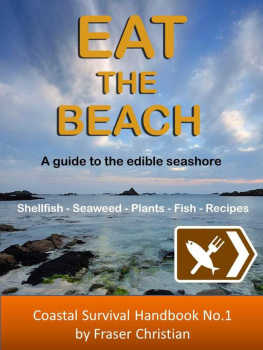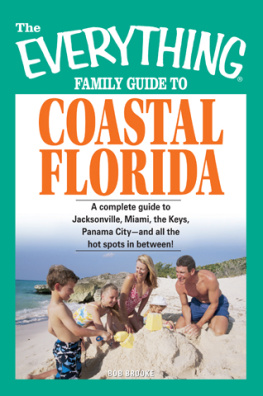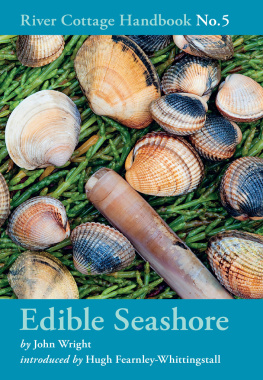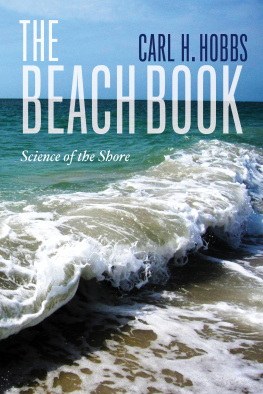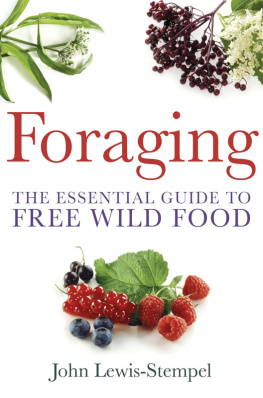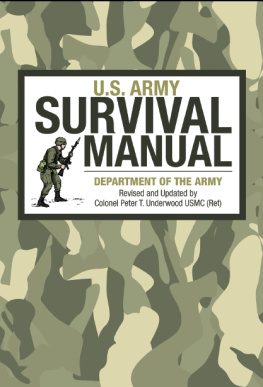Table of Contents
First published in Great Britain 2012.
Text and images 2012 Fraser Christian except:
Razor clams image Paul Asman and Jill Lenoble (used under CC0 licence)
Oyster image David Theages (used under CC0 licence)
The moral rights of the author have been asserted.
This ebook edition first published 2013 by Practical Inspiration Publishing.
ISBN 978-1-910056-02-8
While every effort has been made to ensure the accuracy of the information contained in this book, in no circumstances can the publisher or the author accept any legal responsibility or liability for any loss or damage (including property and/or personal injury) arising from any error in or omission from the information contained in this book, or from failure of the reader to properly and accurately follow any instructions contained in this book.
Introduction
As the sun rises over a sleepy beach, the reflections of shimmering slender plants can be seen dancing in the shallows; as the tide recedes a wealth of plant life and shellfish can be found patiently clinging to the rocks.
Seaweed and shellfish - Neptunes jewels - are both highly nutritious, versatile and easily accessible. To complement the fish you can catch from the beach, theres a wide range of delicious plants found growing along the seashore, including many (sometimes distant) relatives of the vegetables found on offer in the greengrocers. Wild food is far superior in flavour and nutritional content compared to shop-bought, cultivated and farmed food (and its free).
Go forth and forage be well, be happy!
This book was put together for those who wish to learn more about what is edible on seashores and beaches, and how to forage, collect and catch it. There seemed to be endless reference books to wild edible plants when I first started on my journey with wild food, but few dealing with the seashore.
I have listed as many tasty edibles as I could find, some easily and some with a bit of detective work. The coast is a beautiful and sometimes wild environment, rich in diversity and food, and once you understand it can provide both a rewarding and tasty way to spend the day.
Theres nothing quite like messing around in rock pools!
At the back of the book, you can find beach cooking tips and technique with recipes to match, from pickling to roasting, including how to fillet fish, build a smoker and smoke your own catch.
Please enjoy and go safely.
Safety First
Coastal foraging is best done in pairs for safety reasons, as exposed rocks and gullies can be covered with seaweeds making them slippery at the best of times, and lethally so when wet. Caution should always be taken when out on exposed rocks, headlands and especially long surf beaches. A good understanding of the local area and its tidal and weather conditions are a must.
If you are unsure of the tide times, wait until high tide and follow the falling tide out; you will then have approximately 6 hours until it changes direction and starts to flood back in.
Never push your luck in search of a meal and venture too far beyond the tidal limits, or along stretches of beach that are backed by steep cliffs. This be could life threatening as you can quickly become cut off from your route back. Sudden changes in wind and weather can affect the height of the tide in moments. Leave yourself plenty of time to make your way back in good daylight.
Note: always let somebody know where you are off to and what time you expect to return, especially if foraging alone. The local harbourmaster or coastguard can be contacted if you are unsure of your destinations suitability to forage both safely and responsibly. They may also be able to help with information regarding weather and local tidal conditions. Some areas of the coast may have restrictions regarding access, especially in military and conservation areas. Always check with the relevant local authorities if you are unsure. Most beaches and coastlines where restrictions apply are normally signed accordingly.
Its a good idea to get a tide table for the area you are visiting in advance, to help you plan your foraging in relation to the best tide times.
The RNLI produce good tide tables which are available from their shops. Also, most angling centres and shops have them, or look online. If you have checked the local tide times and weather conditions and they are favourable, the most likely danger is that of slipping or falling and sustaining and injury. A mobile phone, well charged and able to receive a good signal, is essential, especially if you are foraging alone.
Note: if you do get into difficulties for any reason and are unsure of your ability to safely make your way back, do not delay: phone 999 and ask for the coastguard. Remain calm, speak slowly and clearly. Help will arrive!
Tides and Weather Influences
The influence and effect of the tide and weather play an important part in our planning when approaching the beach, in respect of the food that may be safely available to us. The weather can be influenced by the tide, and wind direction often changes slightly with the turn of the tide. The result of both wind and tidal flow together produce various notable changes, in sea state and the height or lows of the tide.
When the wind is moving in the same direction as the tide the sea will become calmer, as the wind flattens the waves. When either wind or tide change direction and they oppose each other, known as wind against tide, the sea will build and the waves will become higher. The same can be said for the distance the tide will go in and out.
Just imagine you are on a warm sunny beach at high tide, not a breath of wind and theres plenty of beach exposed around a rocky headland leading to a secret cove, full of edible treasures! You set off around the headland, foraging as you go, but suddenly the wind picks up and blows strongly on shore; the beach or rocks that were once clearly exposed can quickly become swamped by rolling waves as the wind holds the sea up and brings the waves up against the headland!
Please remember that tide tables and weather forecasts are only predictions, its the wind and weather that will have the final say over what the conditions will be like. Tide times are a useful guide, as is the moon: the biggest tides, known as spring tides, will expose the most of a beach at low water, but have the strongest flow rate. The spring tides fall conveniently around the new or full moons, easy to remember, and the small (or neap) tides fall around the half moons.
Essential Equipment
- Mobile phone (check for full charge and good signal)
- Small tub, bucket or basket with handle
- Foraging or walking stick (also helps for stability and balance on the rocks)
- Net bag or old onion sack (available free from most kind greengrocers)
- Local tidal and weather information
- Torch or head lamp
- Waterproof clothing
- Watch or time piece
- Knife
- Compass
Rod and Line Fishing from the Beach
The fairly basic technique of fishing with a rod and line, once you know how, is one of the simplest and most pleasurable ways to catch your dinner. The direct feeling, from you, through the rod, down the line and to your prey, gives you a real sense of connection.
Once you have a bite and hopefully have hooked the fish, what follows can only be described as a mix of nervous excitement and adrenalin-fuelled emotions, as you play the fish back to shore, usually over rocks or through pounding surf. Your mouth would water if it wasnt so dry! As with any subject the information is vast and varied. I have tried to include all the basics you might need to know when approaching the different ranges of the shore from surf beaches to rock marks.
In this book I cover the equipment needed for fishing, including how to find baits and what to use for the various species along the coast, from the easiest and most prolific fish to the more elusive desirable ones, such as the mighty sea bass. All are good eating and a valuable source of protein. Second-hand books on the subject are plentiful and make good basic reference guides, usually including photos of all the fish in the sea. Anything written by Hugh Stoker can be recommended.
Next page
